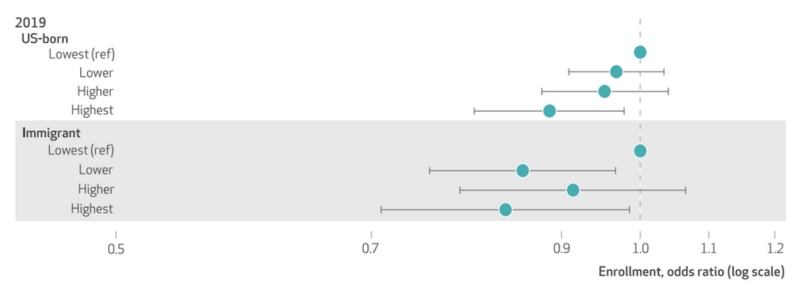ICE’d Out: Immigrant Detention and Social Assistance Programs
ICE detainer requests create a culture of fear among immigrants, preventing lawful immigrants from using safety net programs like SNAP.

Read Time: 2 minutes
Published:
The Supplemental Nutrition Assistance Program (SNAP), formerly known as Food Stamps, provides supplemental funding to help low-income families buy healthy foods. Low-income U.S. citizens and lawful non-citizens, including visitors and legal immigrants, are eligible for food benefits. The amount that a family receives can vary based on income, expenses, and family size.
SNAP is an effective program. It has been shown to improve the physical health of beneficiaries and reduce their costs of health care.
Despite their eligibility to enroll in SNAP, immigrants may be under-utilizing the program. Many immigrants in the United States are wary of the government. Discriminatory experiences, specifically the Immigration and Customs Enforcement (ICE) patrolling of communities and neighborhoods with large immigrant populations, cause alarm. Law enforcement can detain individuals who are suspected, but not confirmed, to be undocumented. ICE patrol and detention of immigrants inspires fear of detention among immigrant communities, even among those who have legally immigrated to the United States.
Immigrants, especially those in neighborhoods that are under ICE surveillance, may be hesitant to share their personal information with the government, revelations necessary to enroll in SNAP or other social assistance programs. While safety net programs claim not to share information with ICE, individuals may fear that any sharing may cause themselves or their loved ones to be detained.
Caroline Kravitz and colleagues studied the relationship between immigration status, county-level detention frequency, and enrollment in SNAP based on the American Community Survey. To assess county-level detainment, the researchers used records of ICE detainer requests (notices issued by ICE that inform law enforcement of their intention to take custody of an individual that they believe is undocumented). They placed counties into four categories based on the frequency of ICE detainer requests.

The graph above shows the likelihood of SNAP enrollment in counties with different frequencies of ICE detainer requests. The researchers also compare SNAP enrollment in immigrants and individuals born in the U.S. Immigrants have lower chances of SNAP enrollment in counties with increasing detainer requests, while U.S.-born individuals show minimal change.
ICE detainer requests create a culture of fear among immigrants, preventing lawful immigrants from using safety net programs like SNAP. In immigrant communities, SNAP may depend on trust of proper information handling, which is often in short supply.



